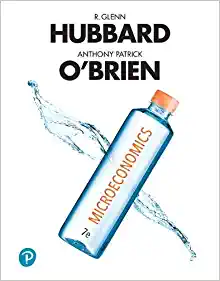Question
Q. No.01: What is an opportunity cost rate? How is this rate used in discounted cash flow analysis, and where is it shown on a
Q. No.01: What is an opportunity cost rate? How is this rate used in discounted cash flow analysis, and
where is it shown on a timeline? Is the opportunity rate a single number that is used to evaluate all
potential investments?
Q. No.02: An annuity is defined as a series of payments of a fixed amount for a specific number of periods.
Thus, $100 a year for 10 years is an annuity, but $100 in Year 1, $200 in Year 2, and $400 in Years 3 through
10 does not constitute an annuity. However, the entire series does contain an annuity. Is this statement
true or false?
Q. No.03: Would you rather have a savings account that pays 5% interest compounded semiannually or
one that pays 5% interest compounded daily? Explain.
Q. No.0 4: "Short-term interest rates are more volatile than long-term interest rates, so short-term bond
prices are more sensitive to interest rate changes than are long-term bond prices." Is this statement true
or false? Explain.
Q. No.05: The rate of return you would get if you bought a bond and held it to its maturity date is called
the bond's yield to maturity. If interest rates in the economy rise after a bond has been issued, what will
happen to the bond's price and to its YTM? Does the length of time to maturity affect the extent to which
a given change in interest rates will affect the bond's price?
Q. No.06: Two investors are evaluating General Electric's stock for possible purchase. They agree on the
expected value of D1 and on the expected future dividend growth rate. Further, they agree on the risk of
the stock. However, one investor normally holds stocks for 2 years and the other normally holds stocks
for 10 years. Based on the type of analysis we have done; they should both be willing to pay the same
price for General Electric's stock. True or false? Explain.
Q. No.07: A bond that pays interest forever and has no maturity date is a perpetual bond, also called a
perpetuity or a consol. In what respect is a perpetual bond similar to (1) a non-growth common stock and
(2) a share of preferred stock?
Q. No.08: If a "typical" firm reports $20 million of retained earnings on its balance sheet, can the firm
definitely pay a $20 million cash dividend?
Step by Step Solution
There are 3 Steps involved in it
Step: 1

Get Instant Access to Expert-Tailored Solutions
See step-by-step solutions with expert insights and AI powered tools for academic success
Step: 2

Step: 3

Ace Your Homework with AI
Get the answers you need in no time with our AI-driven, step-by-step assistance
Get Started


